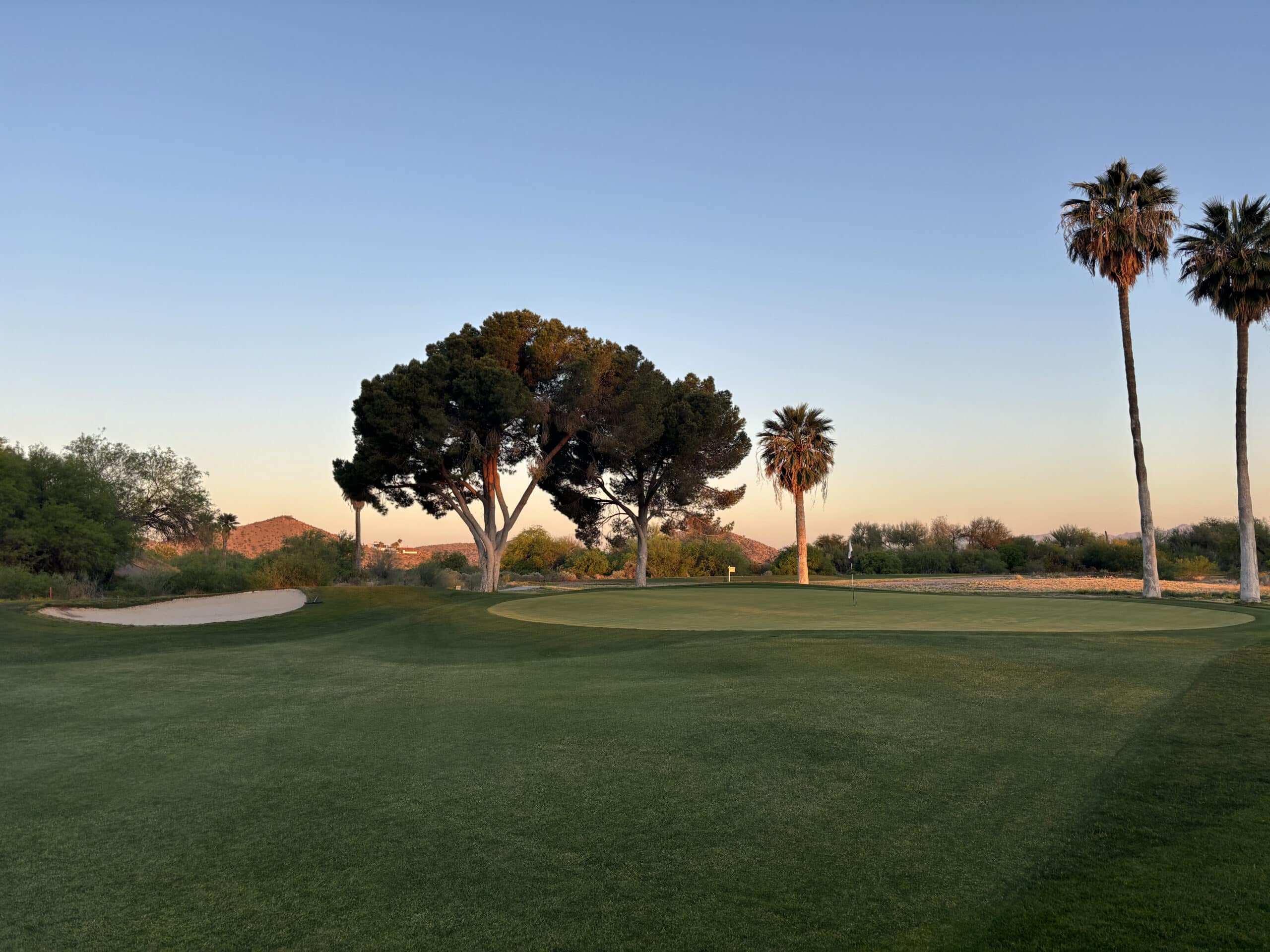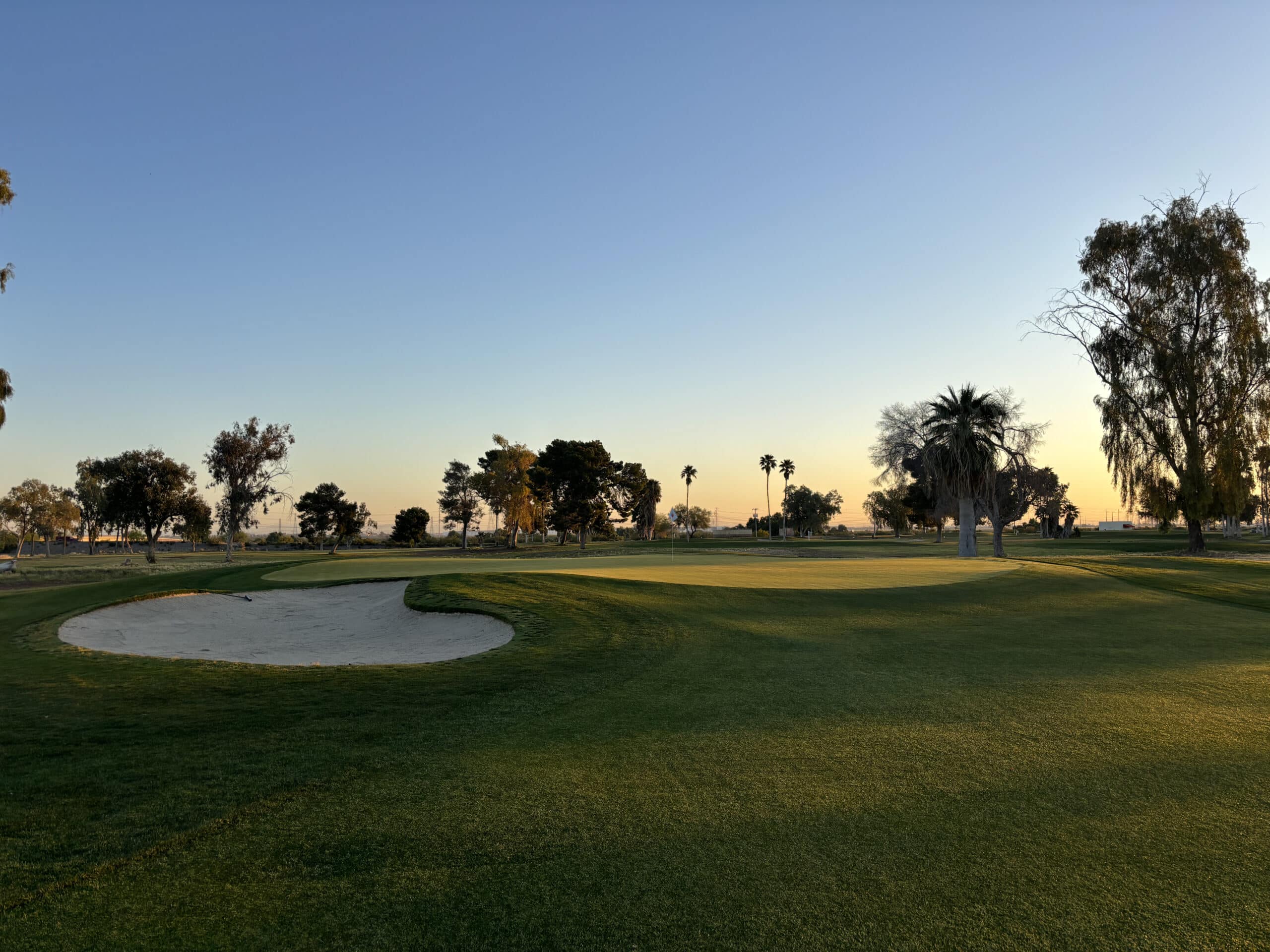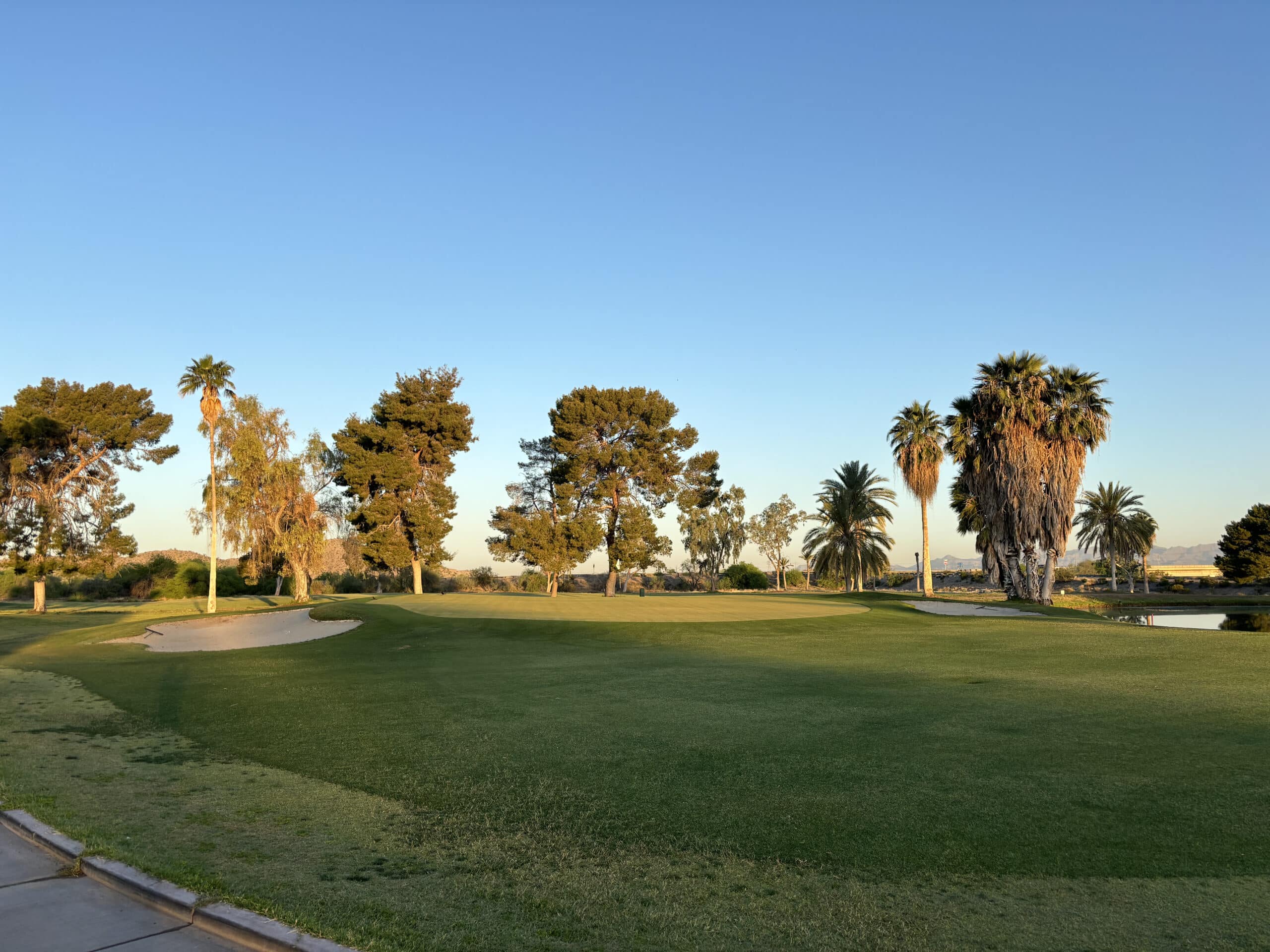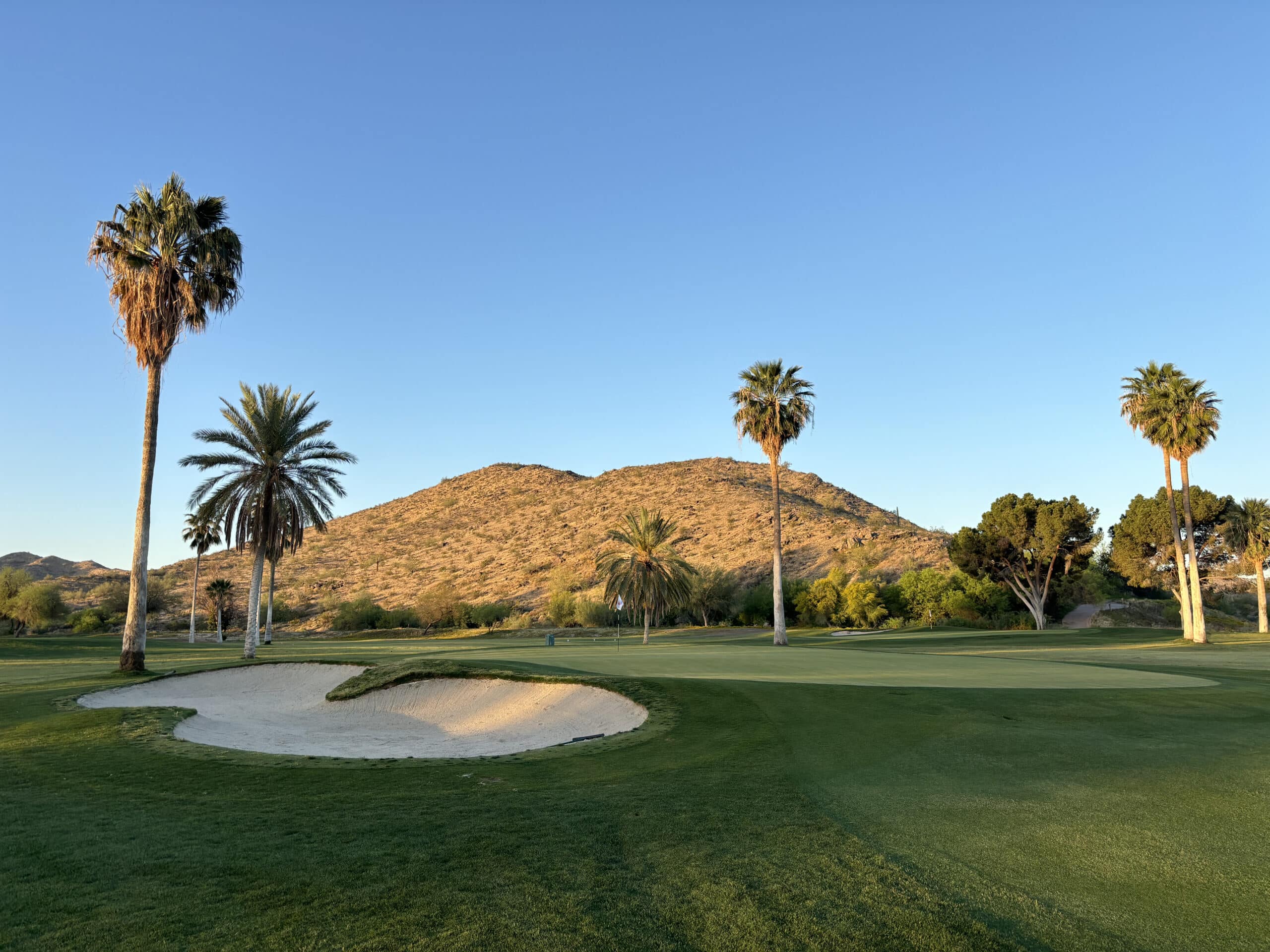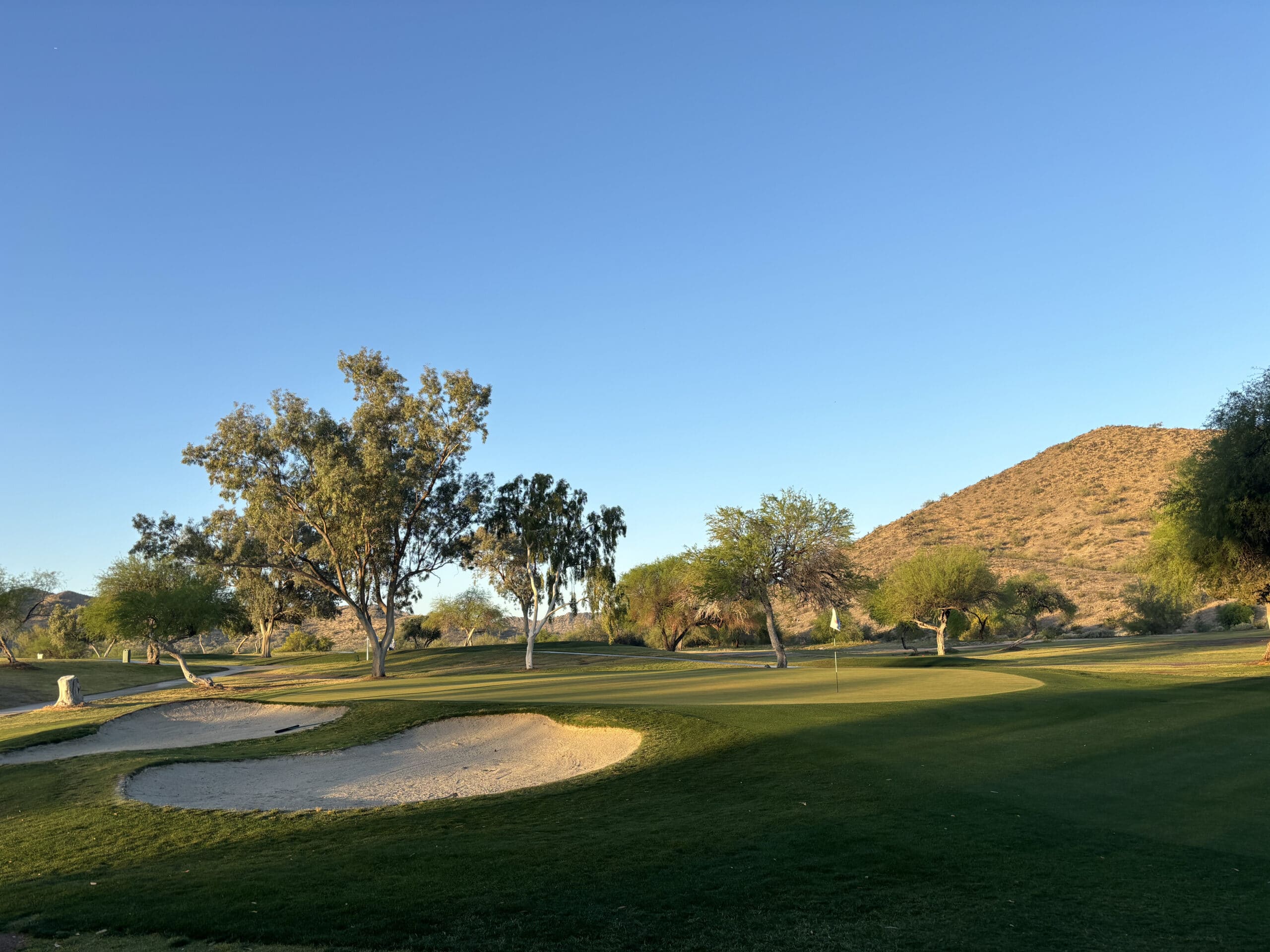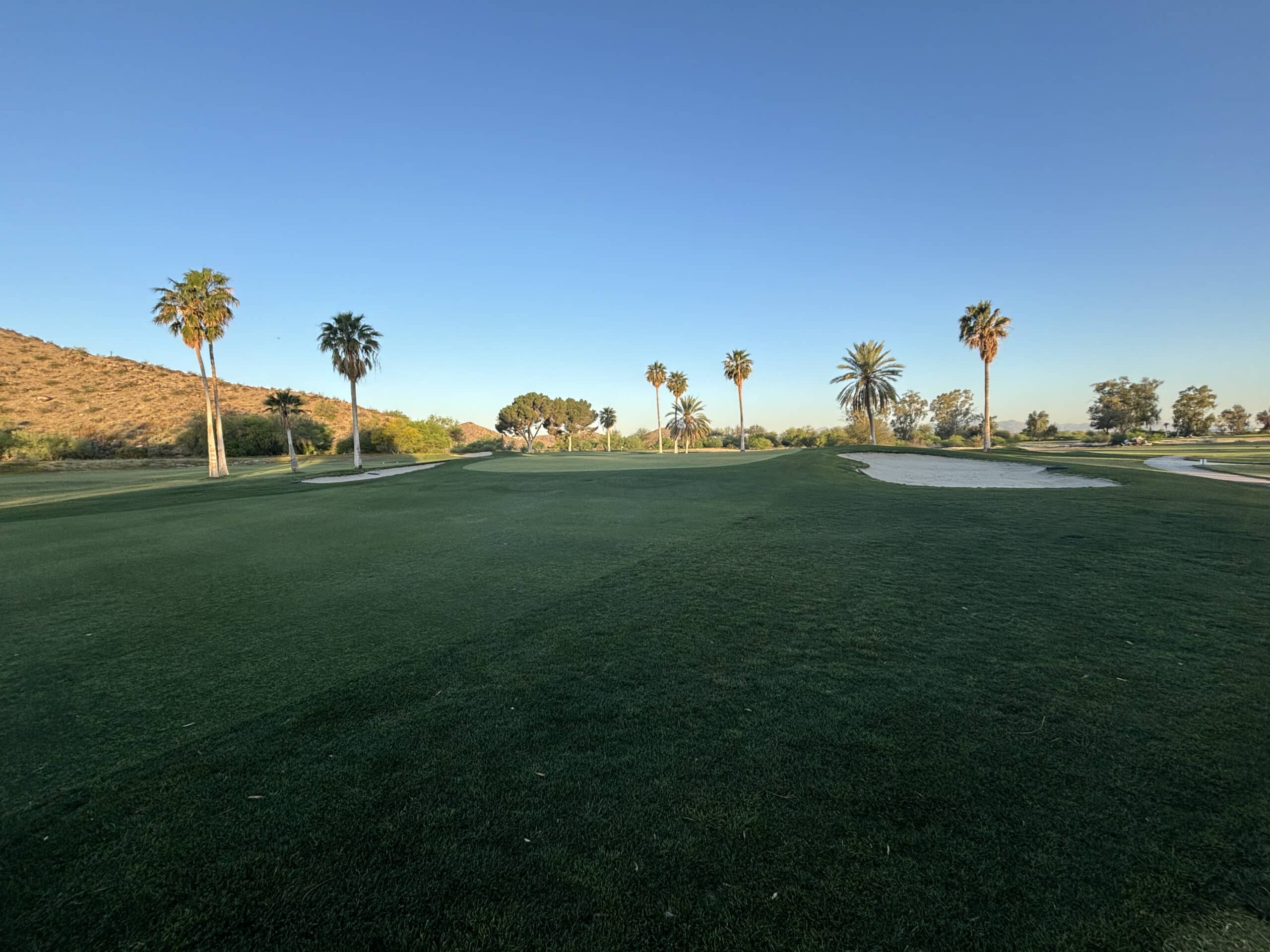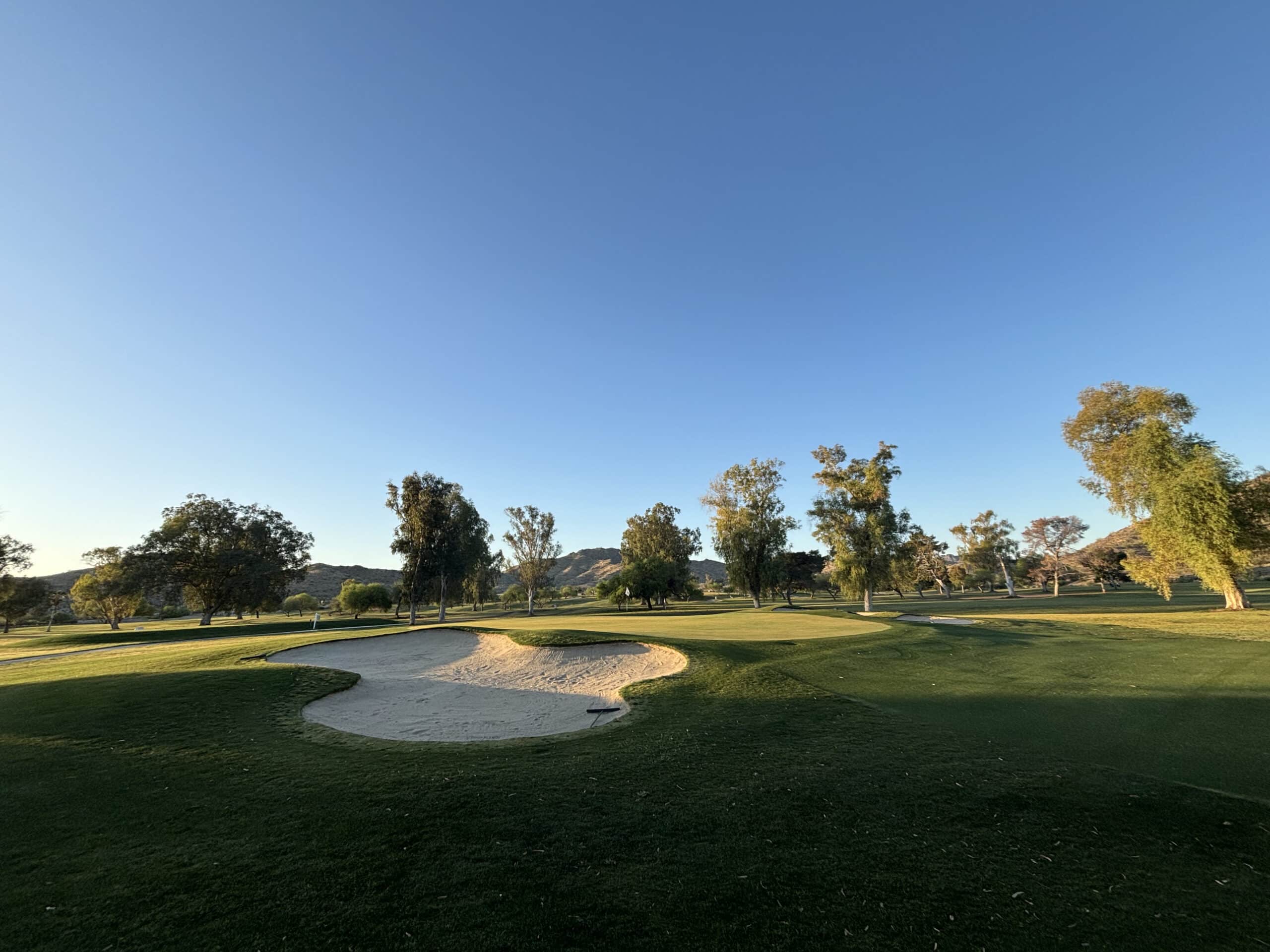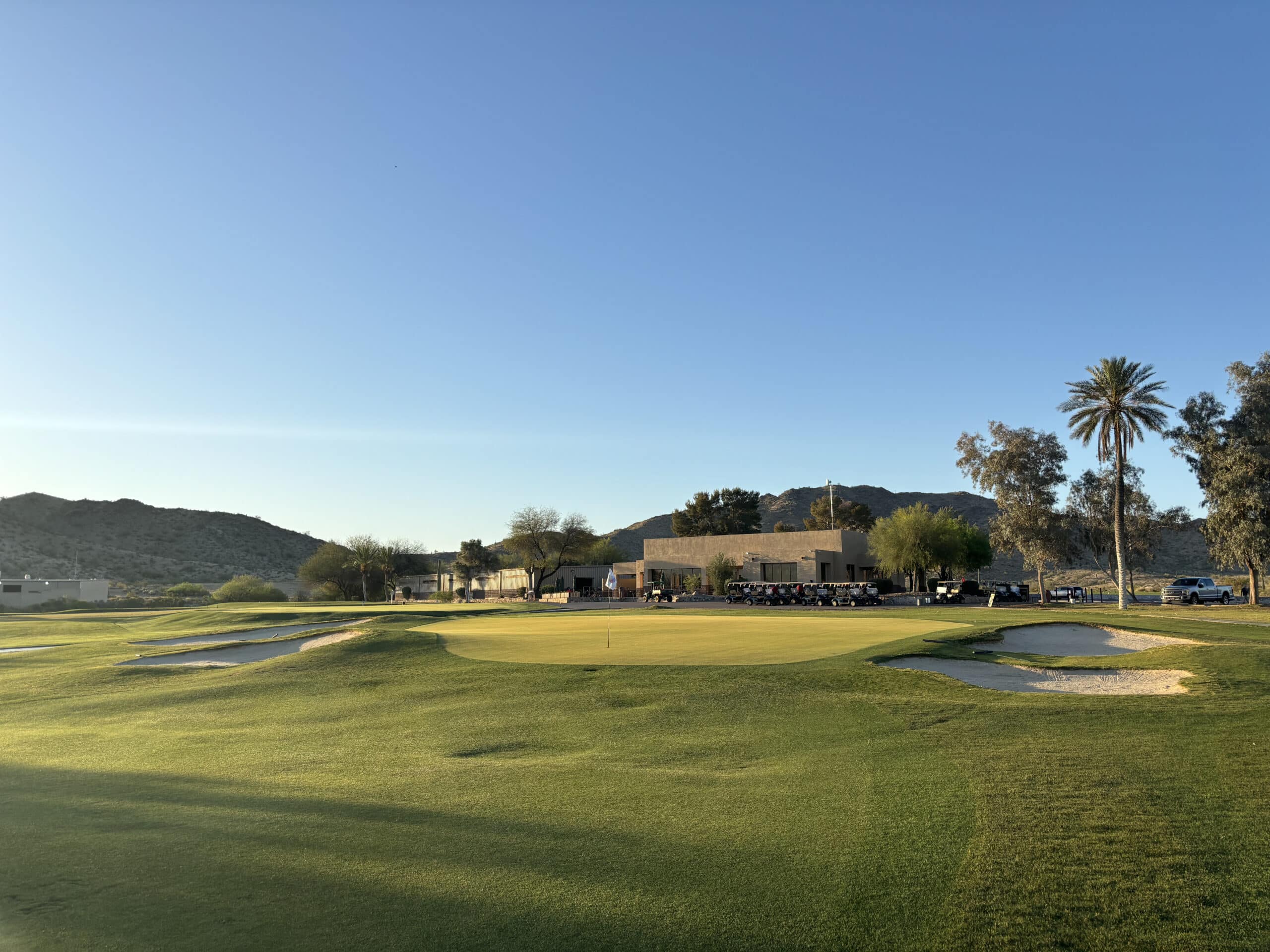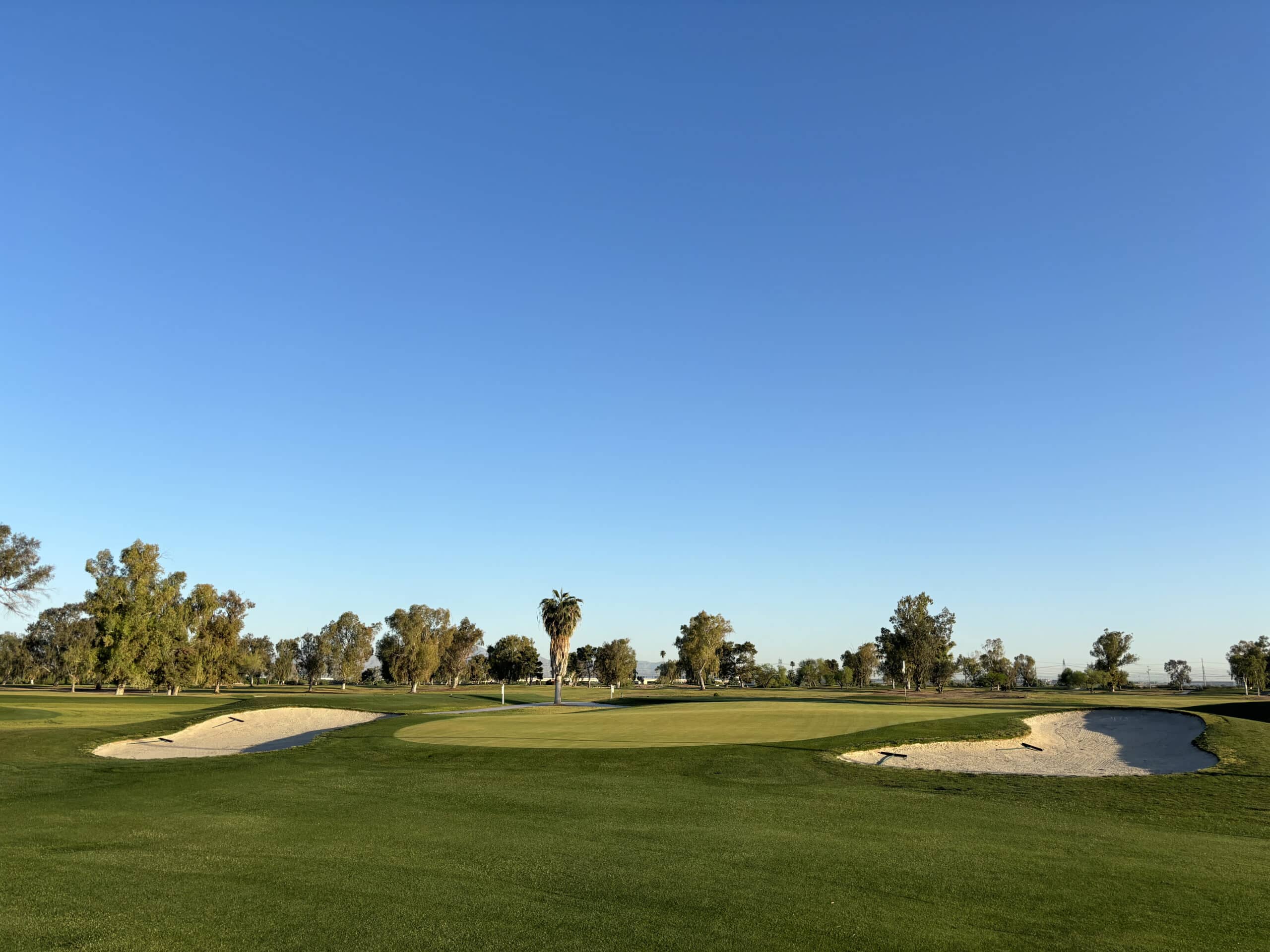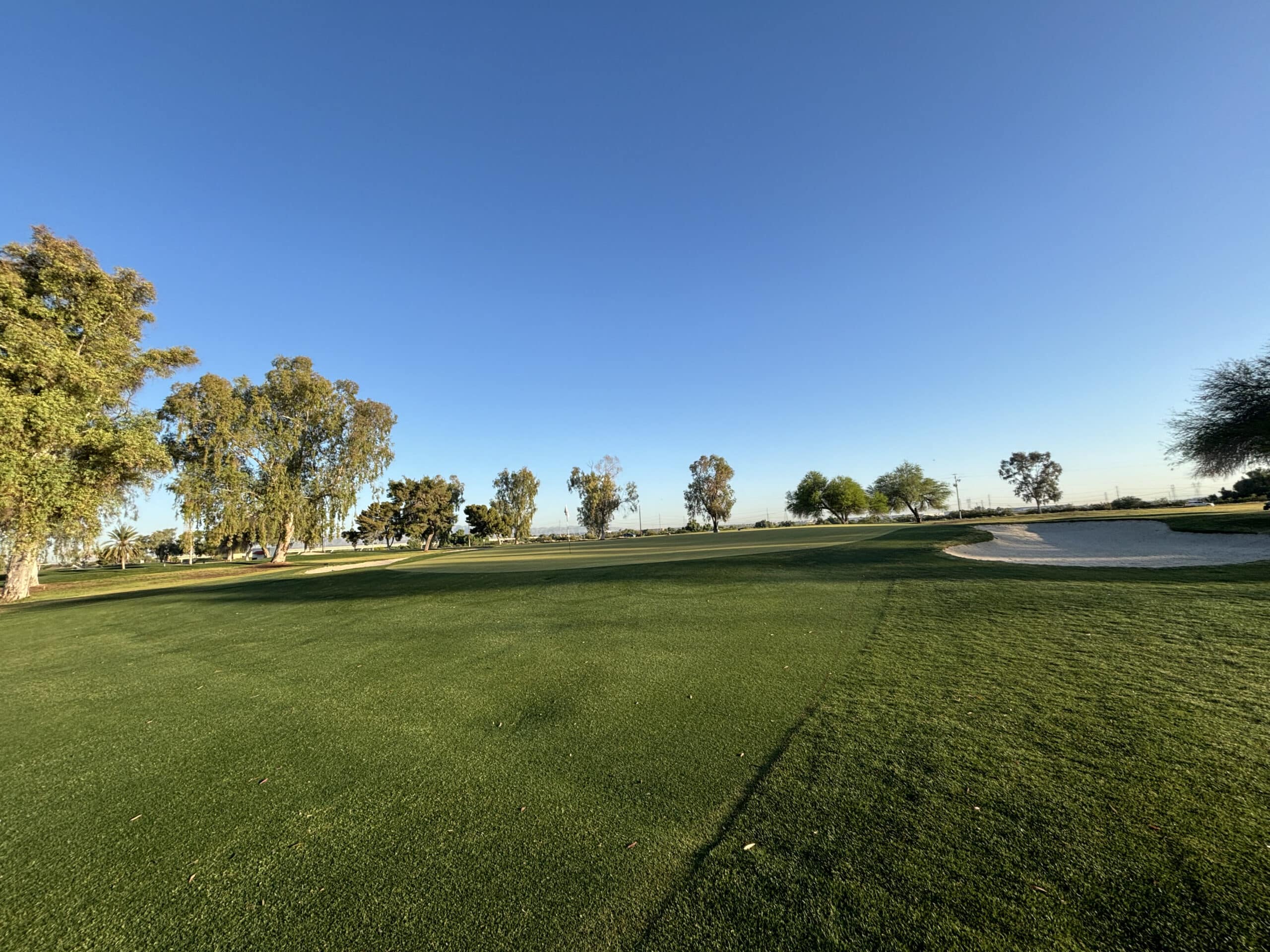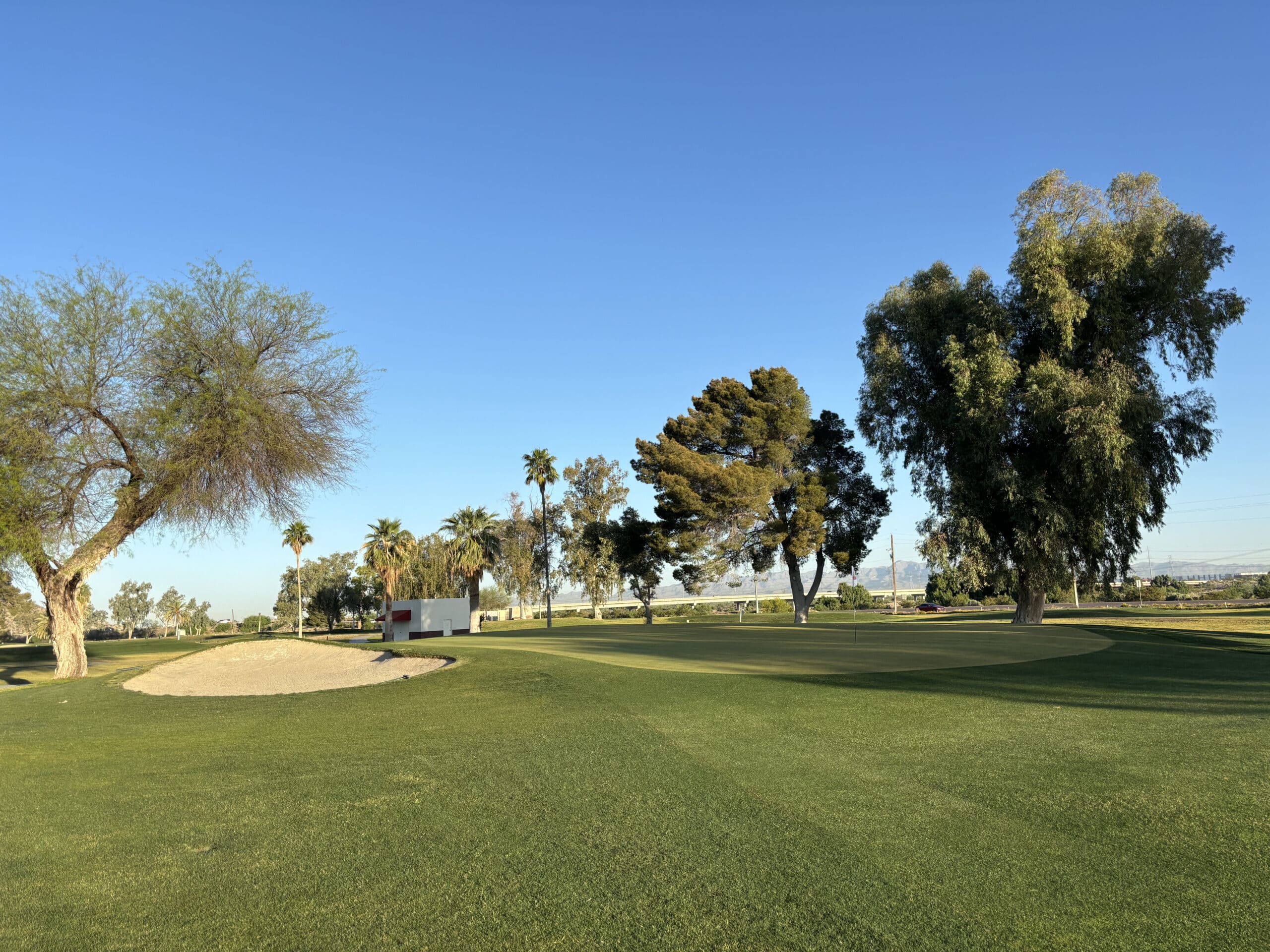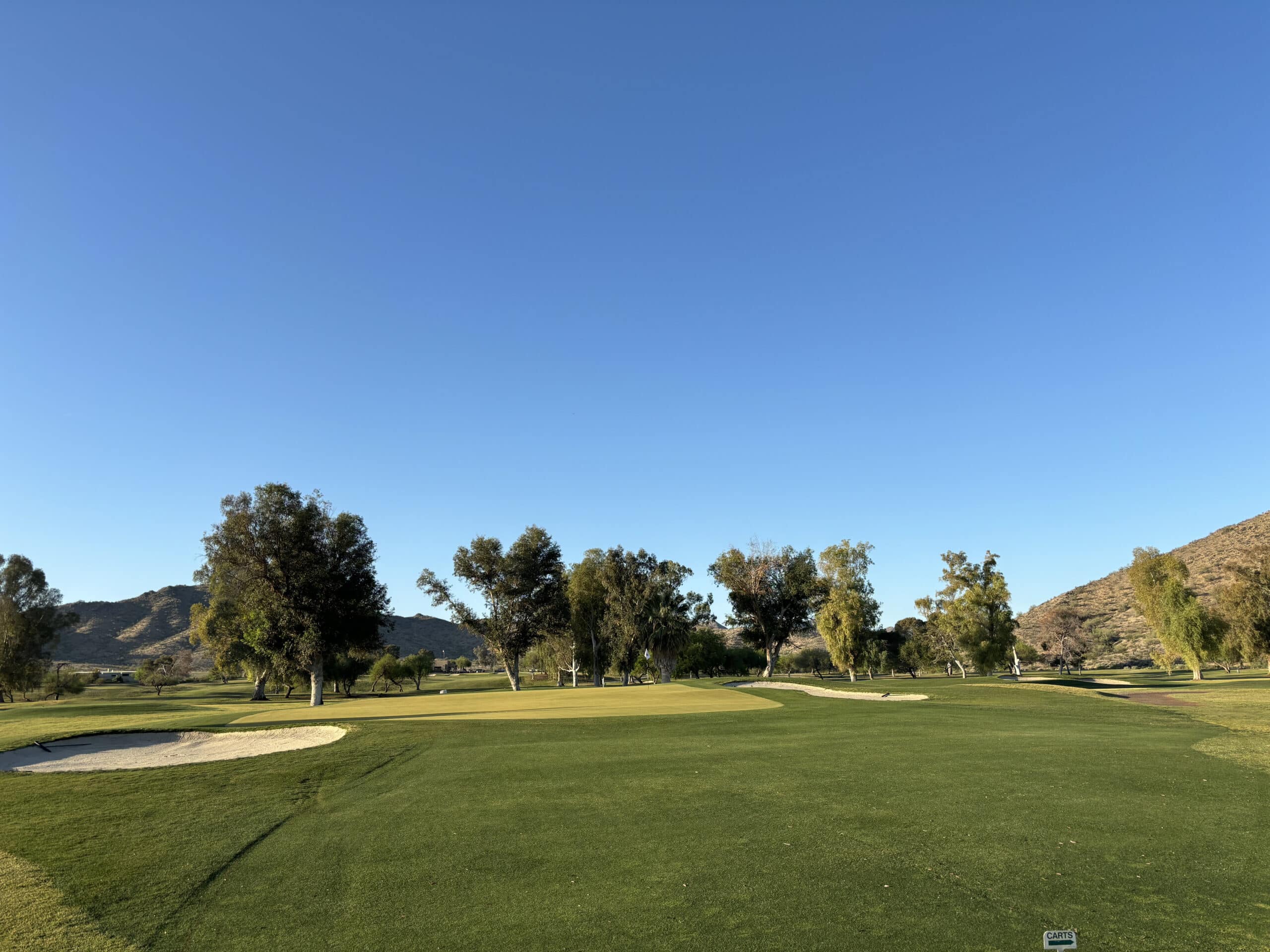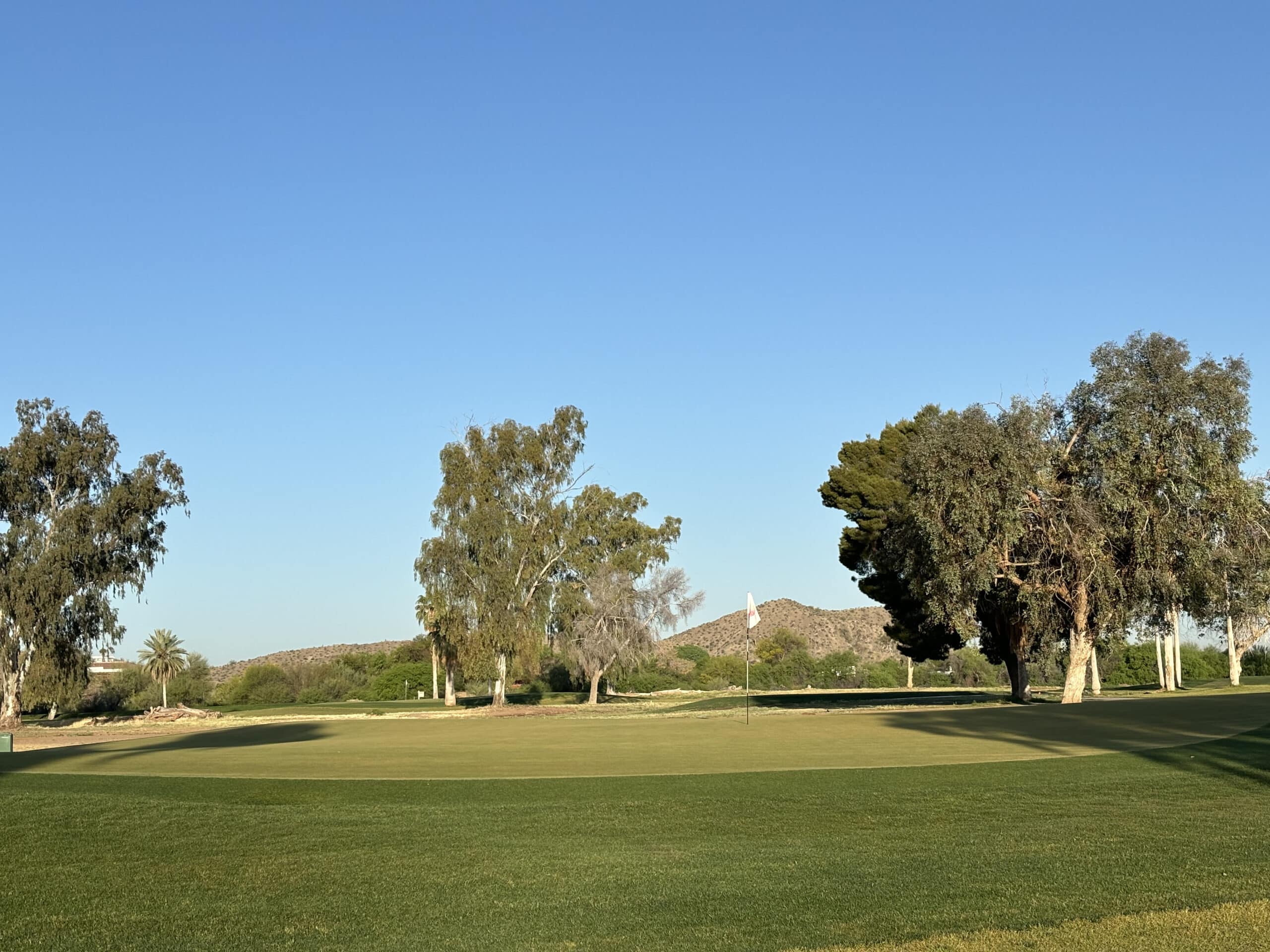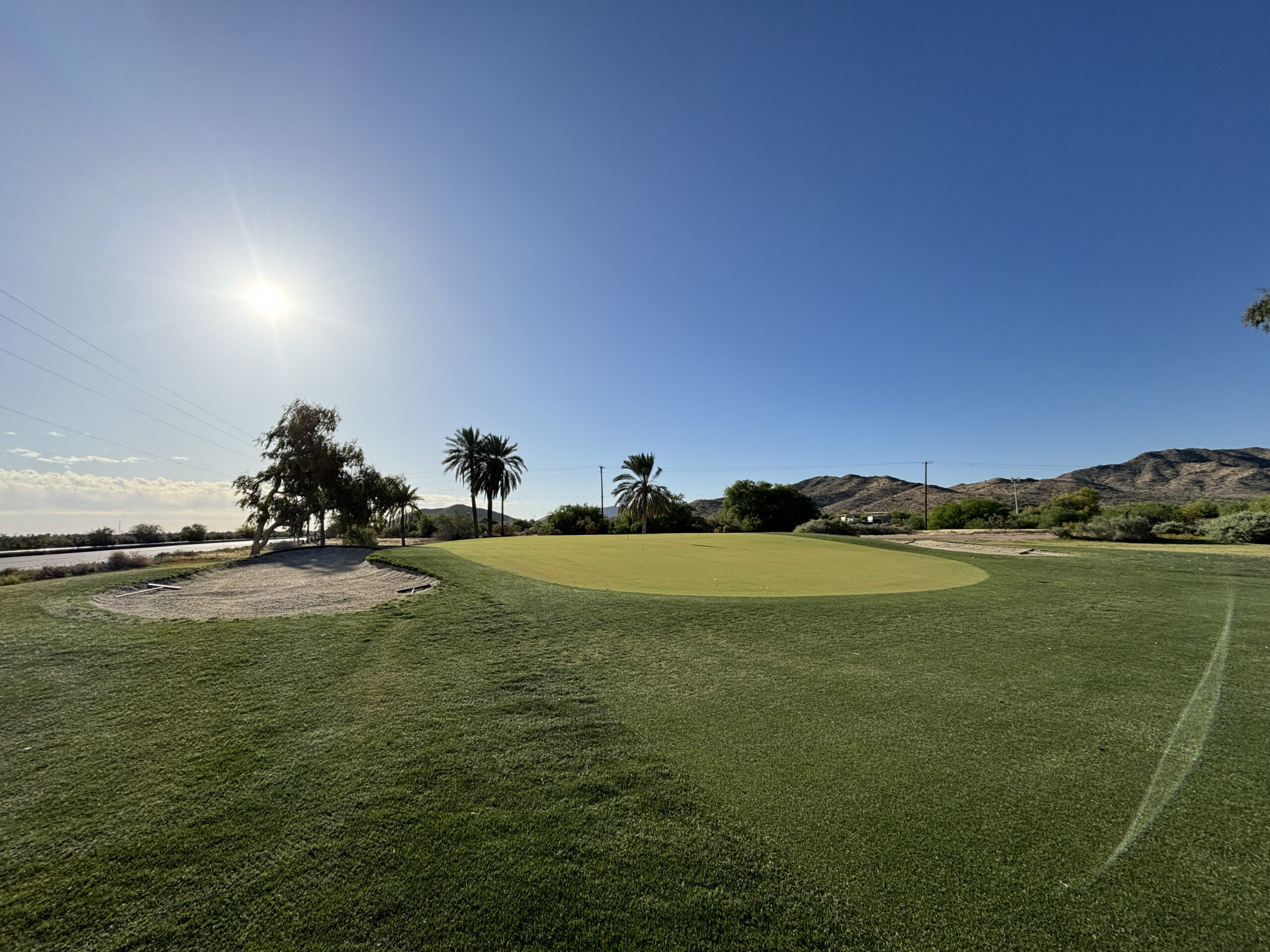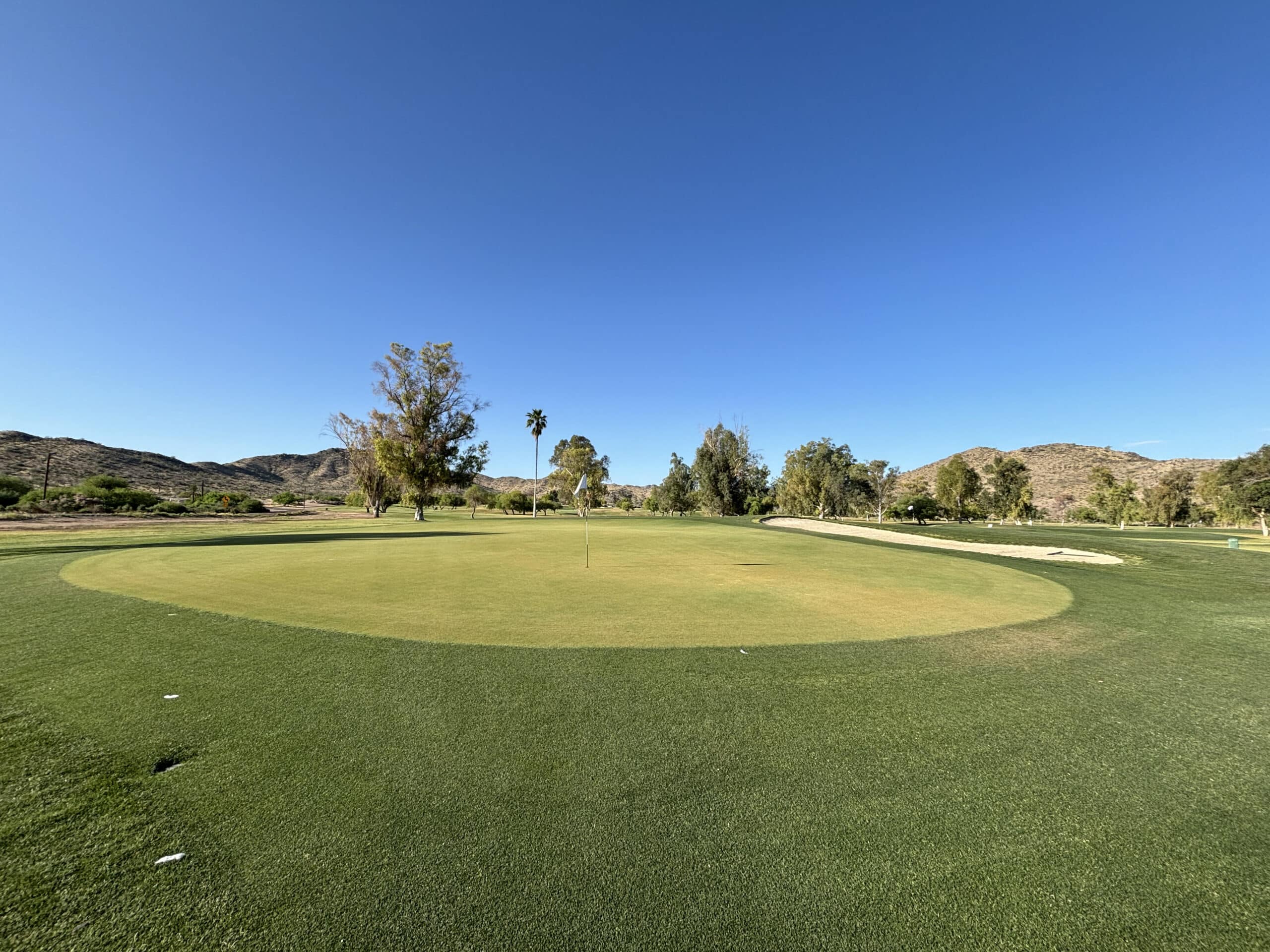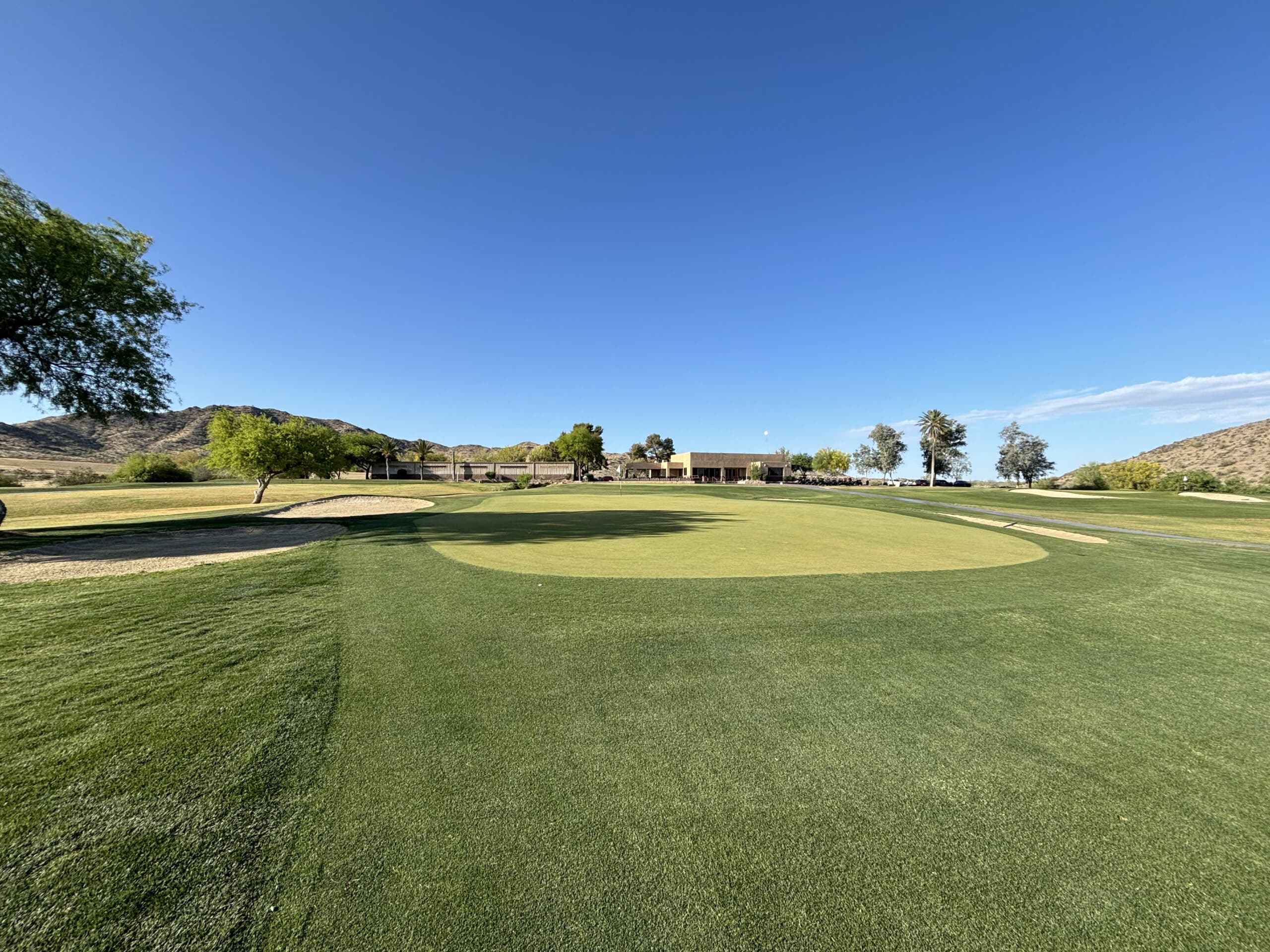Junior National Golf Club
Where The Future Plays
Formerly known as Tres Rios
Public Welcome
About Junior National Golf Club
Junior National Golf (formerly Tres Rios) is one of the early tracts designed by renowned desert golf course architect Robert “Red” Lawrence. Mr. Lawrence was often called the “Desert Fox” after designing the first desert course in the Phoenix area, Desert Forest Golf Club and many subsequent desert courses. The original course, called Sierra Estrella Golf Course, was designed, built, and opened in the early 1960’s. Over the years, and a few name changes, the course became less of a desert course and more “parkland” in style with grass planted throughout the course where the desert once greeted stray golf shots. Non-native eucalyptus trees were popularly planted over the years as well. Our goal is to bring Red Lawrence’s desert golf course back, not just to where it was, but to make it better than it has even been, for everyone.
Red Lawrence Course
Hole 1
Your opening hole is a straightforward medium length par 5, reachable in two by longer hitters. A signature of architect Red Lawrence, you’ll be faced with a tree placed in the middle of the fairway adding additional strategy and a visual impact to your second shot. Getting off to a par or even birdie is a great way to begin your round.
Hole 2
While often playing the easiest of the par 4’s, the shorter second hole includes large green perched a bit higher than the fairway and enough undulation to require you to keep your focus on the green. A challenging bunker protects the front-left of the green which has an overall slope from left to right.
Hole 3
This signature par 4 is a slight dogleg to the right and tee shots favoring the left side of the hole will provide the best approach angle to the green. Several bunkers and water short and right of the putting surface should be avoided and attacking a back right hole location is a bold attempt.
Hole 5
One of many strong par 4’s on the course, the fifth hole moves from left to right. While the right side opens up the green for your approach shot, it is a longer carry to get to the fairway down the right side. The large putting surface has more movement than originally meets the eye so be mindful of the speed and break.
Hole 6
Moving slightly from left to right, this par 4 is best played from down the left side of the hole to avoid the trees encroaching and overhanging on the right side of the fairway. The green sits even further to the right and slopes from back to front often leaving hole-high putts with significant break.
Hole 9
Hole 10
Originally the 1st hole when it opened, this 5-par can be reached in two by longer hitters if they are able to cut-off a bit of the dogleg left. Red Lawrence presents another tree in the middle of the fairway that needs to be considered when laying up or going for this green in two. A green best designed to receive a short iron approach boasts several tiers and much undulation as well as bunkers on both sides.
Hole 11
A deceiving dogleg right where finding the fairway all but demands a left to right ball flight off the tee. One of the most challenging greens on the course is uphill from your tee shot so take a little more club for your approach. Judging speed on this putting surface when going up and down the slopes is the key to a successful two-putt.
Hole 13
The par 4’s on this side are known as the teeth of the course and the lucky thirteenth is no exception. Moving slightly right to left, this beast of a par 4 will leave a long iron or even hybrid/wood into a large right to left sloping green. Your approach shot will tend to release towards the back left portion of the green and par is a great score.
Hole 14
While being the shortest par 4 on this nine, this fairly straight hole features another of Mr. Lawrence’s trees near the beginning of the fairway. Playing up the left side of the hole will give you the best angle to attack this one. The green is well-guarded by a front-right bunker and some severe movement on the putting surface.
Hole 16
A solid and straight par 4 played parallel to Vineyard Avenue. The lone fairway bunker on the course aims to both narrow the fairway and protect wayward balls heading towards the street. The green has a narrow opening, bunkers on both sides and much back to front slope on the first two-thirds of the green.
Hole 17
A solid, long par 4 with a wide fairway that moves a bit from right to left. The left half of the fairway makes for an easier approach to the green. Once reached, the putting complex runs severely from right to left and the back-right portion is tailor-made for a Sunday final round location.
Hole 18
Playing as a short, uphill par 5, the final hole leaves you with options. A well-placed tee shot typically finishes just short of the hill running through the middle of the hole. This will leave a blind approach to the green if going for it in two. Layup to your favorite yardage keeping in mind your approach will be played uphill. This very challenging green is heavily guarded with bunkers on both sides and plenty of movement throughout the green including a false front on the right side.
What We’ve Been Up To
Currently, the course is being returned to its original, intended, desert golf course state highlighted by the removal of the water-hungry eucalyptus trees and additional grass acres that were added to the course. In 2023 all 18 greens were rebuilt, recontoured and re-grassed with mini-verde grass. This grass type allows for less water usage and negates the need for annual overseeding. The putting surfaces may not have the dark green color many are used to, but our goal will be for them to roll quick and true to be a great test for all golfers. At the same time the new greens were installed, all the bunkers were redone with new contours, new, upgraded drainage and new sand.
In 2024, we began the transition of the course back to a desert golf course through the removal of grass between fairways, restoring fairway shapes and continued removal of non-native trees and vegetation. While a slow transformation, we are committed to revegetating the course with native trees and fauna.
Behind the scenes and less notable to the golfer was the acquisition of nearly $1M in maintenance equipment and irrigation upgrades. These included three new pumps to move water around the course, over 1,000 new sprinkler heads as well as mowers, rollers, chippers, grinders and more to improve and maintain playing conditions on the golf course.
The Future is Bright
Future projects include a second 18-hole championship course on the southern side of the property as well as a new, state of the art two-story clubhouse featuring a new restaurant as well as areas for juniors to come, be safe, and learn about positive opportunities for their future.
As a non-profit foundation, the golf course is operated in a manner where any profits will be invested in the youth programs and back into making the golf course(s) better. The land and course is leased from Maricopa County and lies within the Estrella Mountain Regional Park. Monthly payments to the County Parks & Recreation Department as well as annual percentage of adjusted gross revenues are paid, and those funds are earmarked for improvements back into the Parks & Recreation Department.
Junior National Foundation
Junior National Foundation is a Non-Profit golf foundation with a simple mission at heart: To change the lives of youth through the game of golf. While serving all junior golfers, the Foundation will have a focus on helping at-risk youth. There is simply so much that can be learned through this wonderful game, the myriads of vocations it touches, and life-long and life-changing relationships it fosters/develops.
The Foundation’s concept, and its funding are the vision of John & Linda Wall. John grew up in the area, riding his bike to the course, almost daily, from Luke Air Force base and then from a home in Park Shadows, along Litchfield Road. At that time the course was named Sierra Estrella, and John acquired his love of the game by working for the PGA Professional and being mentored by the course’s Men’s Golf Club. Building upon the lessons learned at and on the golf course, John has gone on to many professional and personal successes and views this as his opportunity to give back to the area, the game and most importantly, the youth in the area.
#juniornational
Share your experience with us by using the hashtag #juniornational

